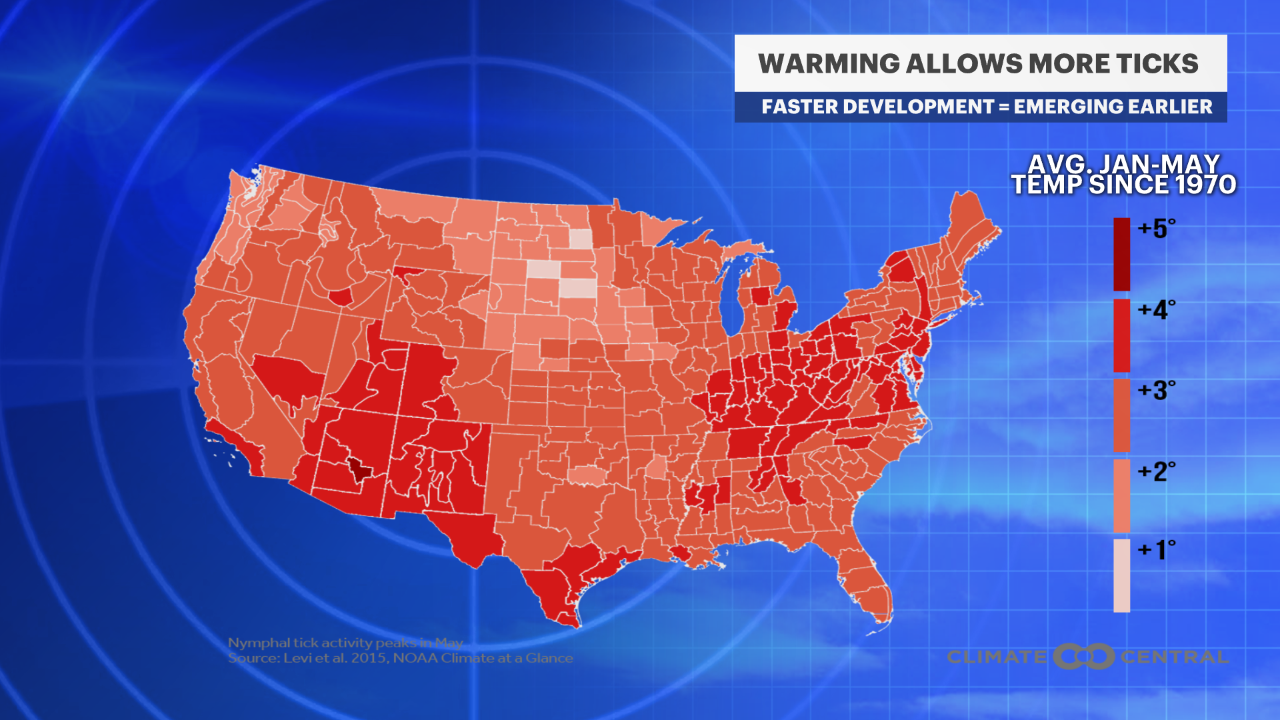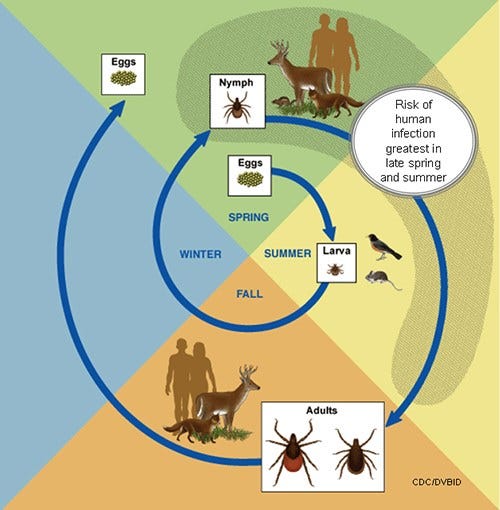How is the rise in temperatures affecting tick activity?
Studies show that warming early year temperatures are linked to faster development and earlier activity of ticks across the area. Geoff Bansen sat down with a local expert to further investigate.
•
Aug 13, 2020, 2:05 PM
•
Updated 1,732 days ago
Share:
Ticks and Lyme disease are always a warm weather threat across our area. But with temperatures on the rise, could that threat be getting worse?
According to a few new studies, that answer is a yes.

First let's start with warming average temperatures between January and May. A long-term study of the blacklegged tick - known most commonly as the deer tick - in New York found that rising temperatures between January and May were associated with a peak in tick activity almost three weeks earlier than normal. The warming climate is causing these ticks to develop faster, thus emerging earlier than experts have ever seen before.
It also increases the likelihood that ticks may survive longer, from the juvenile stage to adulthood. According to another study, this could allow ticks to multiply more quickly, and may even help them spread to new areas that were once too cold.

Normal seasonal cycle of ticks. Courtesy of the CDC.
With Lyme disease already doubling over the past two decades, these studies are quite concerning.
To gain some more insight about this trend, I sat down with Stony Brook Medicine's Dr. Luis A. Marcos. The full interview can be seen below.
Special thanks to Climate Central for use of the graphic and their continued efforts to spread knowledge about climate science.
More from News 12
1:17

Car crashes through fence at marina in Port Jefferson, lands on top of dock
1:34

Sunny and pleasant Monday on Long Island; more rain chances this week
1:31

Police: 3 killed in fiery Bethpage car crash
0:32

US Trade Representative Greer says US and China to suspend most tariffs for 90 days
0:59

Suffolk PD: 62-year-old motorcyclist killed in Brentwood crash
1:24
